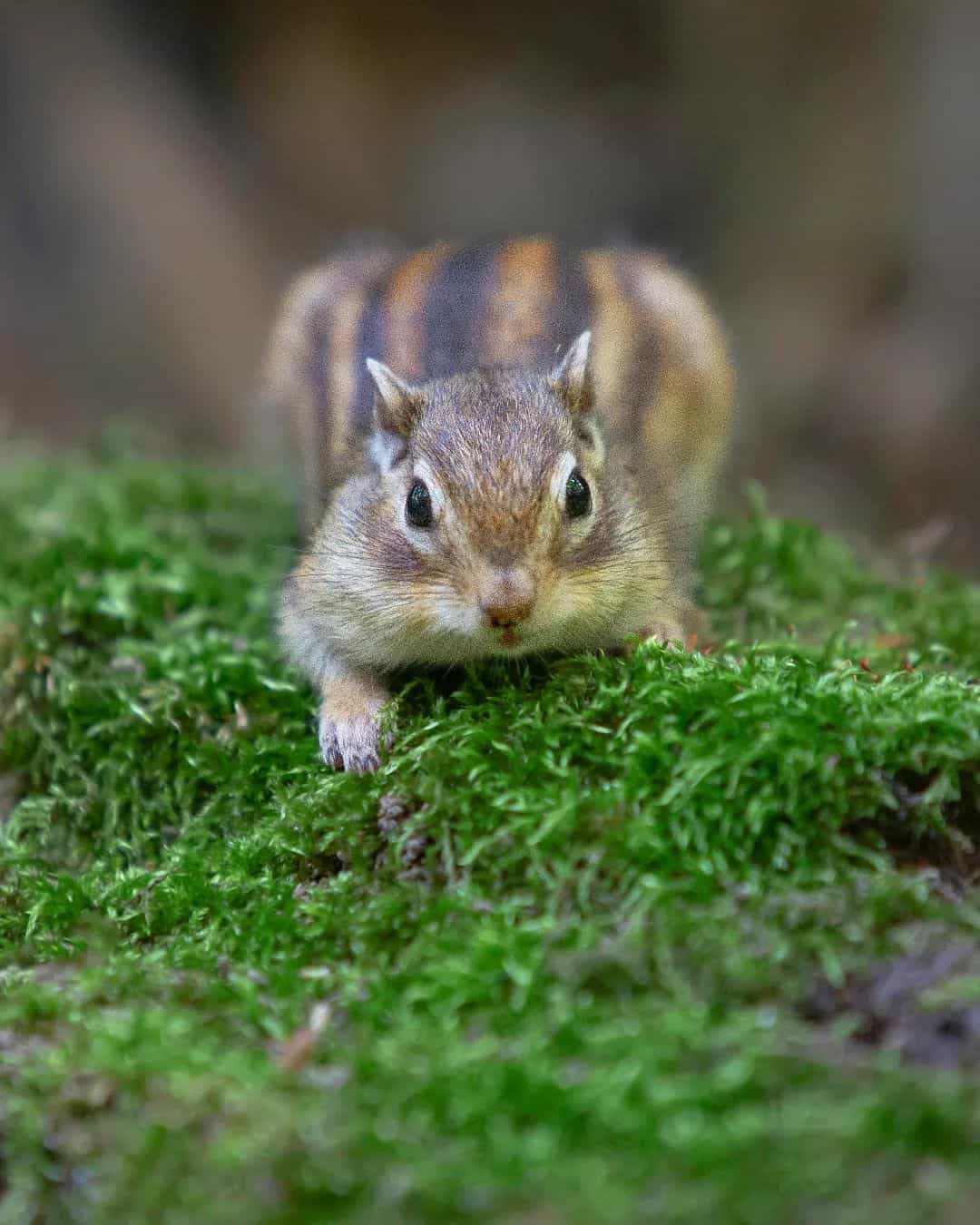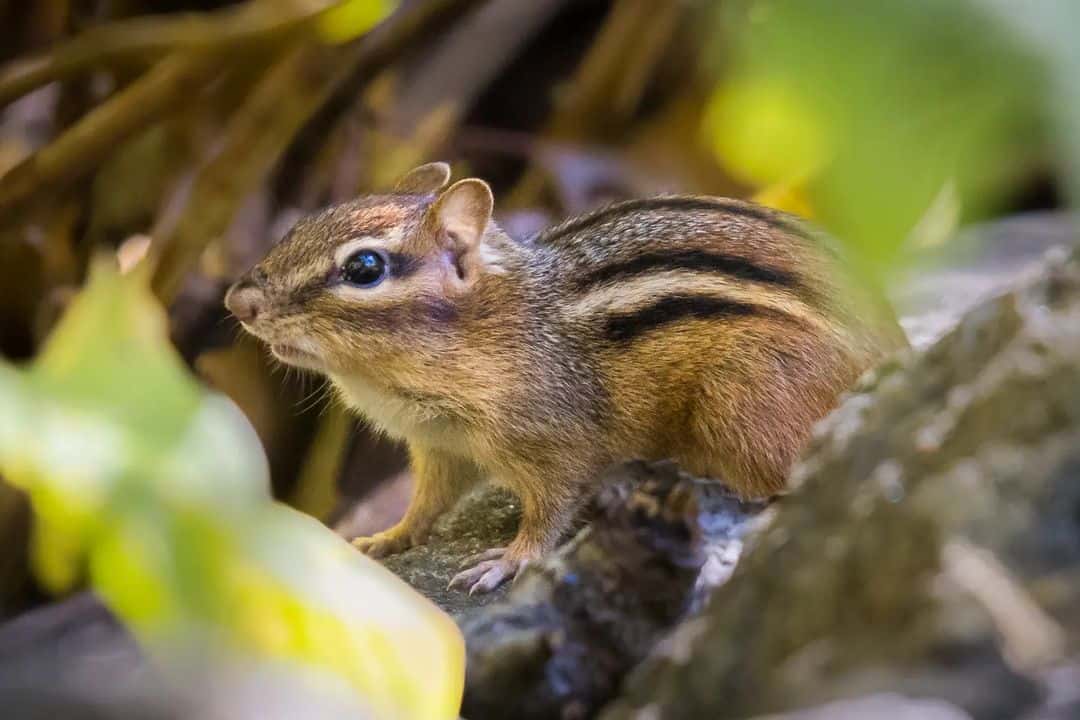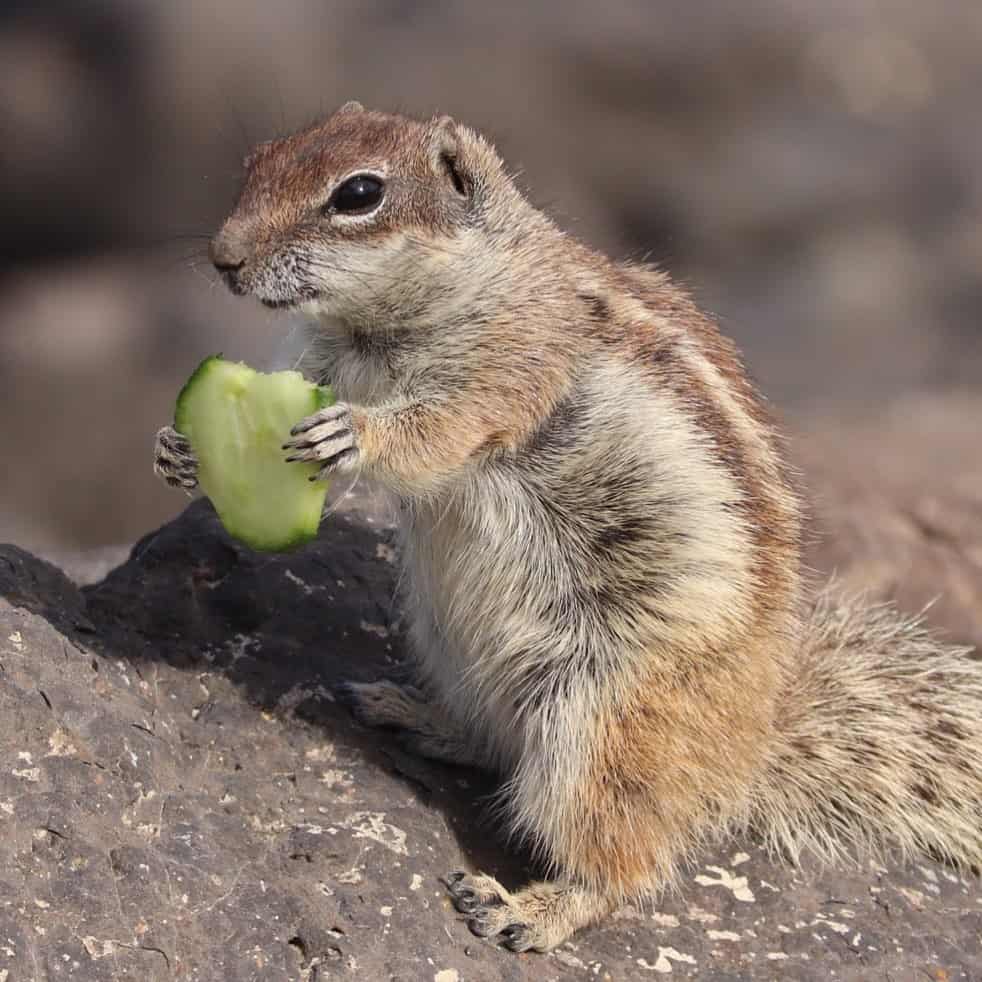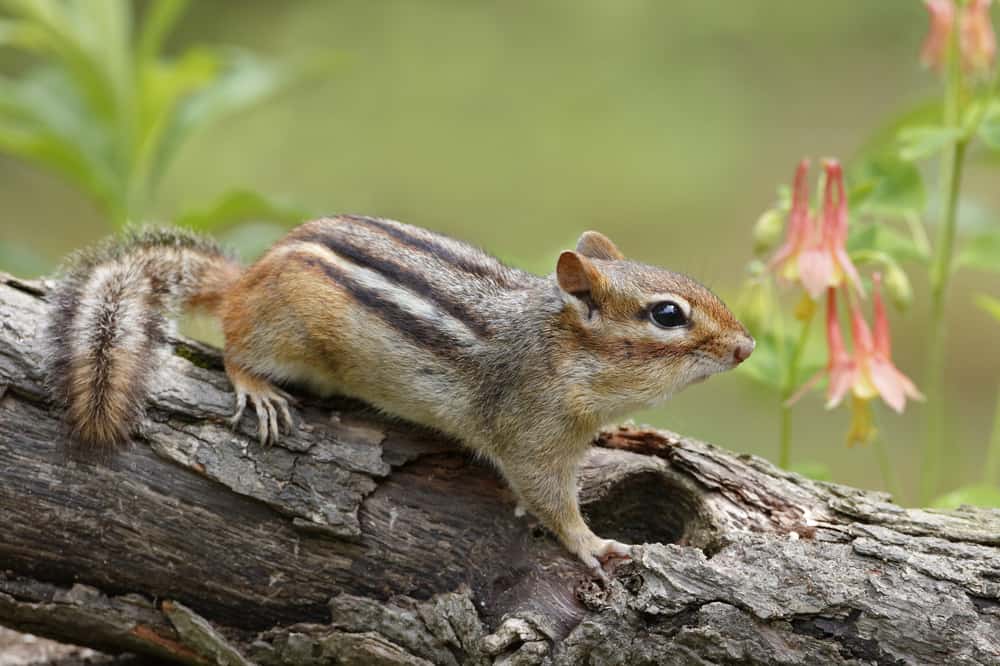Those who have ever visited a park or spent time in the great outdoors have likely seen the fast-moving, almost acrobatic chipmunks at play. It can also be difficult to miss their shrill chirping and chattering, as they seem everywhere.
But where do chipmunks live? Chipmunks are small members of the squirrel family that have adapted to living in a variety of habitats worldwide.
This article will explore more about these fascinating creatures and why they choose certain areas to live and breed.
What Are Chipmunks?
Chipmunks are small, furry animals with cheek pouches and bushy tails, measuring around five to eight inches. They typically weigh between one and three ounces, depending on the species. They have a distinctive facial pattern of chestnut brown or black stripes running down their face and back, varying in color from gray, black, or chestnut brown.
Their front legs are shorter than their hind legs, giving them a hunched-over look. They have large eyes and ears, allowing them to see and hear predators easily.
Where Do Chipmunks Live?
Chipmunks are small, furry rodents native to North America and can be found in every region from Canada to Mexico. Of the 25 known species of chipmunks worldwide, 24 are in North America. The Siberian chipmunk is the only outlier and can be found in parts of Asia rather than North America.
Most chipmunks live in woodlands, ranging from deciduous forests to coniferous forests. They are also found around forest edges and open meadows. Some chipmunks may even reside in human homes and yards, forming complex burrow systems on a patio or underneath flower beds.
Uncovering the Unique Habits of Different Chipmunk Species
Although most chipmunks will generally live in the same habitats, each species has slightly different habits. For example, Panamint chipmunks primarily inhabit urban and suburban areas as they are not easily startled by humans. They also dwell in mountainous regions where temperatures remain high, and vegetation is scarce.
Red-tailed chipmunks prefer coniferous forests packed with fir and pine trees for their food source. In contrast, Colorado chipmunks occupy varied locations, such as woodlands, montane shrublands, deciduous forests, and even alpine tundras.
Buller’s chipmunks, California chipmunks, and Sonoma chipmunks inhabit fewer regions with cover from predators such as woods, bushes, or rocks.
The Eastern chipmunk (Tamias striatus) is the most common species in North America and can be found all along the East Coast from Canada to Mexico. It is also common in the Midwest and parts of the Southwest. They prefer open woodlands, forest edges, and clearings with thick ground cover, such as shrubs or tall grasses, for protection.
Chipmunk Nests and Burrows
Chipmunks live in burrows for most of the year. These tunnels have multiple chambers, each with an entrance hole. Chipmunks will create complex underground burrow systems with many entrances and chambers for storing food, nesting, and hibernating in the winter months.
The burrows protect them from predators such as weasels, foxes, raccoons, owls, hawks, and coyotes. The tunnel entrance is usually identified by a mound of dirt outside the hole. Most burrows are found around the edges of forests, along fence lines, or under patios and decks.
Chipmunks typically build their nests in chambers deep inside their burrows. The nests are made from leaves and other materials close to the entrance hole, such as bird feathers or mushrooms. In colder climates, chipmunks hibernate in these deep chambers for up to seven months of the year, beginning in late autumn and ending in April.
Chipmunk Behavior and Interactions

Male chipmunks will fiercely protect their designated territory during mating season, with habitats typically ranging from 40 to 50 feet.
To mark the boundaries of their area, they secrete an oily substance from their body. It’s also common for them to make loud chirping and whistling noises as a form of communication or to alert other chipmunks to the presence of predators.
Chipmunks are generally solitary creatures but interact briefly during the breeding season. Female chipmunks also interact with their young in the first few weeks of life. These social interactions usually end when the babies reach around seven weeks old and become independent.
1. Eating Habits
Chipmunks are omnivores and feed mainly on nuts, seeds, fruits, berries, fungi, eggs, insects, snails, slugs, earthworms, and other small invertebrates. They may also eat bird seed from bird feeders or raid porches for peanut butter and other snacks. While these animals don’t migrate as some other species do, they can travel up to 20 miles in search of food if needed.
2. Crepuscular Behavior
Chipmunks are active during the morning and evening hours, with short bursts of activity in between. This is called crepuscular behavior, a pattern in many animal species.
During the summer months, they may also be active throughout the day.
3. Hibernation
Chipmunks hibernate in winter, and their body temperature and heart rate will drop considerably. True hibernators remain asleep throughout the entire winter season, but other species may wake up during milder temperatures.
4. Breeding Habits
Chipmunks are one of the first animals to appear as soon as the snow melts in the spring. Males will emerge a few weeks before females, and often groups of males will compete for a single female.
Once conception has occurred, a chipmunk’s gestation period is roughly 30 days. After birth, mothers will raise their litters independently, with most chipmunks only producing one litter annually. Some chipmunks can have two litters in good years. Once born, young chipmunks will be blind and bald for the first ten days of life.
After this point, the fur becomes visible, ears open around 28 days after birth, and eyes open between 31 and 33 days old. As infants, the young will be unafraid but quickly become wary when they leave the burrow at 4-7 weeks old to start foraging for food on their own.
By September, adults have usually reached full size; by October, young chipmunks will have dispersed to start living independently.
Why Are Chipmunks Invading My Home?

The proximity of food sources, shelter, and companionship attract chipmunks to human homes. They may also be drawn in by warm temperatures or an inviting place they can call home, such as under porches, decks, patios, stairs, or other structural damage where there’s easy access for them to come and go.
Chipmunks are also attracted to places with a food source, such as bird feeders or pet food left outside. They can enter your home through tiny holes and cracks in windows, doors, or other structural damage, so if you think your house is secure, keep an eye out for any potential access points they could use.
What Damage Can Chipmunks Cause?
Once inside, chipmunks can wreak havoc on your home by chewing through electrical wiring and other structural materials, causing significant damage.
They can also burrow into insulation, walls, or flooring, which can cause structural instability. As they move around your house, chipmunks can leave behind feces and urine that carries diseases and contaminate food sources with their droppings.
Chipmunks may also cause damage to furniture and floors by gnawing on wooden items or leaving grease marks when they use baseboards or other surfaces for navigation.
Chipmunks can also attract different pests, like rats and mice, that can cause further damage.
How Can You Prevent Chipmunk Infestations?

Once inside your home, chipmunks can be challenging to remove as their burrowing abilities mean they can quickly find hiding spots that are hard to reach. If you find an unwelcome guest in your house, the best thing to do is contact a reputable pest control company that will know how best to handle the situation.
Prevention is always better than cure, so seal any holes or cracks in windows and doors and ensure lids are securely on all outdoor bins. It is also a good idea to avoid leaving food waste around where chipmunks can access it.
Conservation Status
Human activities have destroyed habitats worldwide, threatening many wild populations with extinction – especially those living near urban centers.
Chipmunks are an essential part of the food chain, playing a critical role in their ecosystems by helping to spread seeds and provide food for predators. To ensure their survival, we must protect their habitats.
Also, avoid trapping or trapping chipmunks as it’s illegal in many states and very cruel to animals. If you’re having issues with chipmunks in your home, use humane methods such as exclusion or repellents and contact an experienced pest control company for assistance.
With the proper steps, we can ensure these animals are protected and still enjoy a healthy population for years.
Final Thoughts
Chipmunks are found in various habitats across North America, Europe, and Asia. They prefer environments with dense vegetation, such as forests and meadows. Chipmunks also thrive in urban areas, making them one of the most adaptable small mammals on the planet.
Regarding these cute critters, it’s always a good idea to be mindful and give them their space. Catching a glimpse of one in the wild is an exciting experience, but if they find their way into your home, they can cause significant damage and introduce other pests.
Keep an eye out for any potential entry points and ensure lids are securely on all outdoor bins. With the proper steps, we can prevent infestations from occurring and enjoy watching chipmunks in their natural habitats.
